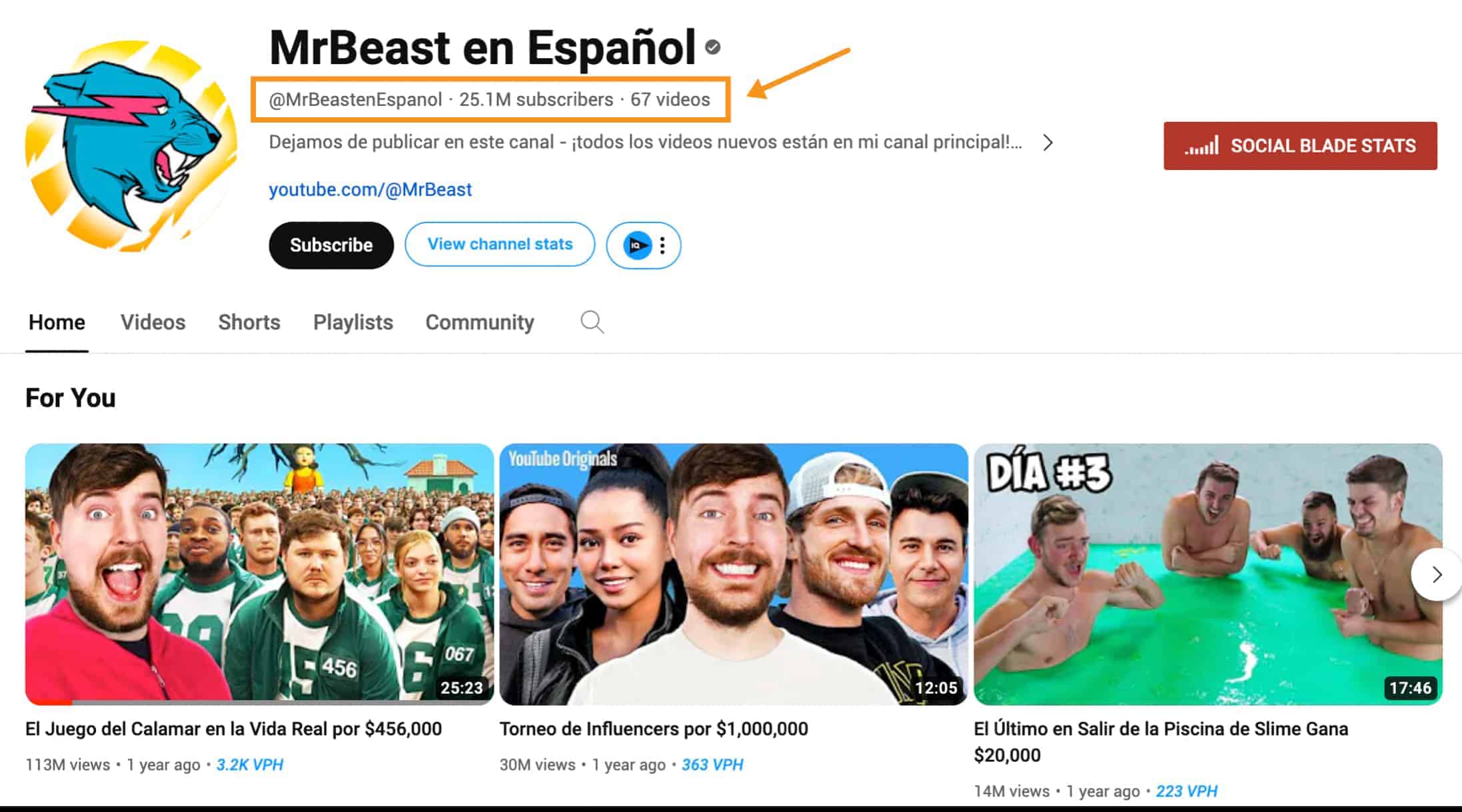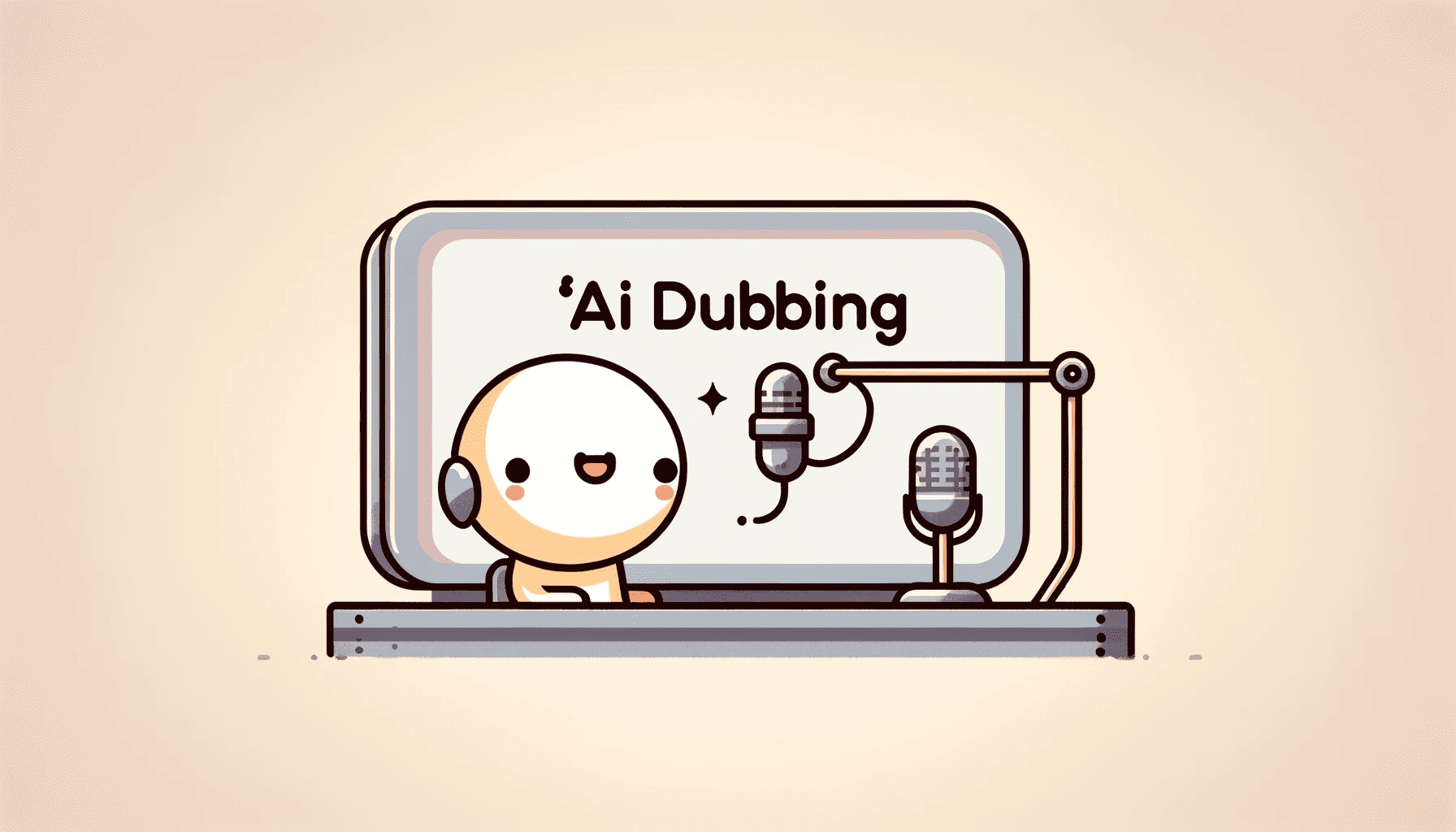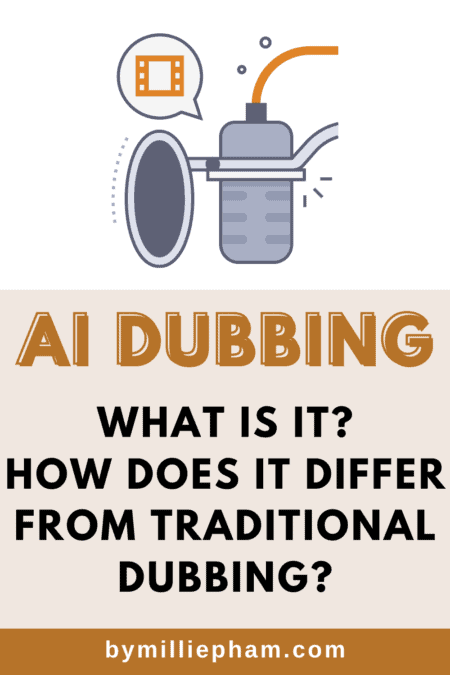Have you watched 'MrBeast en Español'? This is what happens when you use video dubbing.

The same videos are in English, but after dubbing them into Spanish, the channel got over 25 million views!
Did you know? 60 percent of all video views on YouTube come from non-English speakers [1].
That means a lot of people on the internet like to watch videos in their own language, not just in English.
This shows that we can reach more people by localizing content in their own languages and accents.
Now, AI technology is changing the game. It's making it easier and quicker to dub your videos in new languages. This is what we call AI dubbing.
In this post, we're going to look at AI dubbing and see how it's different from the old way of dubbing. We'll talk about how it helps and where it might need some work.
Excited to learn about how AI tools are changing online video translation? Let's jump in!
What is AI Dubbing?

AI dubbing technology uses artificial intelligence to translate spoken dialogue into multiple languages.
Instead of having voice actors record their lines over and over in different languages, this smart system uses AI voice technology to create high-quality dubbing.
It listens to the original language in a video and then uses complex algorithms to turn that into a new language. This means that a movie or a show can speak to you in your language, even if made on the other side of the world.
AI dubbing is helping to break down language barriers, making it possible for everyone to enjoy the same great content.
How Good is AI Dubbing?
When we dive into the quality of AI dubbing, there's a lot to consider.
On one hand, artificial intelligence has made leaps and bounds in accurately translating and replicating human speech in multiple languages.
It can pick up on nuances and even get the timing right so that the words match the lip movements on screen. This is a big deal because it makes the viewing experience much smoother and more enjoyable.
However, it's important to note that while AI dubbing is quite advanced, it's not always spot-on.
Sometimes, the tone or the emotion behind the words might not fully match what a skilled voice actor could deliver.
After all, a certain warmth and depth comes with human performance, which AI is still learning to capture.
But here's the thing: AI voice dubbing is incredibly fast and cost-effective. It allows content creators to release their work to a global audience without the long wait times associated with traditional dubbing processes. This means that we, as viewers, enjoy a vast array of international content without language barriers.
In short, AI dubbing is good, especially when you weigh the benefits of accessibility and speed. It's a constantly evolving technology, and while it may not replace human voice actors entirely, it's certainly making the entertainment world more accessible to everyone.
Voice Dubbing vs. Voiceovers
When we talk about making shows and movies in one language available in another, two methods often come up: voice dubbing and voiceover. They might sound similar, but they're actually different ways of doing things.
Voice dubbing is when the original audio of a show or movie is completely replaced with a new language. The goal is to make it seem like the characters are naturally speaking the new language. It's a full swap - the original voices are gone, and new ones take their place.
Voiceover is a bit different. Instead of replacing the original audio, a voiceover artist reads the translation, and this new audio is played over the original sound. So, you might still hear the original language quietly in the background.
Here's a simple table to break it down:
Feature | Voice Dubbing | Voiceover |
|---|---|---|
Audio | Original audio is replaced | Original audio is kept, with new audio on top |
Lip Sync | Matches the actors' lip movements | Does not match lip movements |
Experience | Feels like watching in a new language | Feels like listening to a translation |
Use | Movies, TV shows | News reports, documentaries |
So, when you're watching a foreign film and it feels like the actors are really speaking English (or any other language), that's voice dubbing at work.
And when you're watching a documentary and hear the narrator speaking over the original audio, that's voiceover.
Each has its place, and choosing between them depends on what you're watching and how you want to experience it.
AI Dubbing vs Traditional Dubbing
When we pit AI dubbing against traditional dubbing, we compare a high-tech newcomer with a tried-and-true classic.
Traditional dubbing is all about human voice actors stepping into a recording booth to lend their voices, infusing each line with genuine emotion and personality.
They watch the scenes, feel the characters' feelings, and do their best to bring that same spirit to another language. It's a craft that requires talent, timing, and a lot of practice.
Meanwhile, AI dubbing is the tech-savvy cousin shaking things up. It uses sophisticated artificial intelligence to analyze the original audio and generates a new dubbed voice in a different language.
This tech is brilliant – it can even sync the new audio with the character's lip movements. But while it's incredibly efficient, it's still learning to capture the subtle nuances a human actor delivers naturally.
Here's a more detailed table to help you see the differences:
Feature | AI Dubbing | Traditional Dubbing |
|---|---|---|
Human Touch | Currently lacks the nuanced expression of humans | Rich with the actor's personal touch and nuance |
Speed | Translates and dubs content rapidly | More time-consuming due to manual recording |
Cost | More cost-effective due to automation | Higher costs due to actor fees and studio time |
Flexibility | Can quickly switch between languages | Requires a new set of actors for each language |
Emotional Depth | Progressing, but can miss subtle emotional cues | Captures complex emotions and cultural nuances |
Cultural Accuracy | Uniforms across different languages | Actors can bring cultural understanding |
Consistency | It may vary depending on the dubbing team | May vary depending on the dubbing team |
Availability | Accessible for less commonly spoken languages | Limited by the availability of voice actors |
In essence, AI video dubbing offers a fast, consistent, and accessible way to enjoy content in multiple languages, which is especially useful for less commonly spoken ones. Though more costly and time-intensive, traditional dubbing provides a depth of performance that resonates with the audience on a more personal level.
The choice between the two often boils down to the specific needs of the content and the audience's preferences.
Advantages and Disadvantages of AI Dubbing
Advantages of AI Dubbing:
- Speed: AI dubbing processes content at an incredible pace, allowing for rapid translation and dubbing that can keep up with the demand for new content in various languages.
- Cost-Effectiveness: Without hiring a team of voice actors for each language, AI dubbing can significantly reduce production costs, making it a budget-friendly option.
- Scalability: AI can handle large volumes of content and scale up quickly to accommodate multiple projects or languages simultaneously.
- Consistency: The voice quality and style remain consistent across different episodes or even different series, providing a uniform experience.
- Accessibility: It opens up content to a broader audience, including languages that might not have a large enough market to justify the cost of traditional dubbing methods.
Disadvantages of AI Dubbing:
- Emotional Depth: AI still struggles to replicate the emotional depth and range that human voice actors can convey, which can lead to a less engaging experience.
- Cultural Nuances: Subtle cultural references, idioms, and humor may not be accurately captured by AI, potentially leading to misunderstandings or a loss of the original content's charm.
- Voice Quality: While technology is improving, AI-generated voices can sometimes sound synthetic or unnatural, which can be distracting to the audience.
- Contextual Understanding: AI may not always interpret the context correctly, leading to voice inflections that don't match the on-screen action or dialogue.
- Audience Reception: Some viewers prefer the authenticity of human-dubbed content and may be less receptive to AI-dubbed productions, affecting the overall acceptance of the dubbed content.
My Favorite AI Dubbing Tool
When it comes to the best AI dubbing service tools, I've got two favorites that I think you'll find quite intriguing: Eleven Labs (Review here).
Since its launch, Eleven Labs has quickly climbed the ranks to become one of the leading AI text-to-speech generators.
It offers free and paid features, allowing users to create human-like speech, design custom AI voices, and even clone their own voices.
This flexibility is fantastic for personalizing content in over 29 languages.
What I love about both these tools is their user-friendliness and high output quality.
Whether you're a content creator aiming to reach a broader audience or just someone who loves playing around with tech, Eleven Labs is worth exploring.
Final Thoughts
So, what do we take away from all this about AI dubbing? It's pretty clear that this technology is changing the game.
It's like having a super-smart system that can turn a movie into your language, quickly and without needing lots of different voice actors.
This is huge for bringing us all together, letting people from all corners of the world enjoy the same cool shows and movies.
But, even though AI-powered dubbing is fast and saves money, it's not perfect yet. Sometimes, it misses the special touch that only a real person can bring – like getting the emotion just right. Still, it's getting better all the time.
In the end, whether it's AI dubbing or the traditional way with voice actors, what matters is enjoying our favorite content in a way that feels right.
AI dubbing is opening doors for more of us to watch video content we love in our own languages. And that's pretty awesome.

